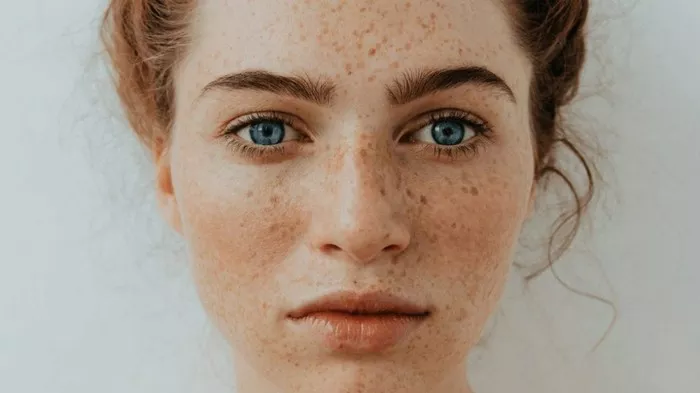Freckles are small, flat, brown spots that appear on the skin. While some people embrace their freckles as a unique feature, others may want to reduce their appearance. One option for reducing the appearance of freckles is a chemical peel. In this article, we’ll explore whether a chemical peel can get rid of freckles and discuss some of the other treatment options that are available.
Chemical Peel Get Rid of Freckles: How Does it Work?
A chemical peel is a cosmetic treatment that involves applying a chemical solution to the skin to remove the outer layer of dead skin cells. This can help to improve the texture and tone of the skin, reduce the appearance of fine lines and wrinkles, and even out skin tone.
Chemical peels can be used to reduce the appearance of freckles by removing the top layer of skin where the freckles are located. However, it’s important to note that not all freckles will be removed by a chemical peel. Freckles that are deep in the skin may not be affected by a chemical peel, and some freckles may return after the treatment.
Types of Chemical Peels
There are several types of chemical peels that can be used to reduce the appearance of freckles, including:
Superficial peels: These peels use a mild acid, such as alpha-hydroxy acid (AHA), to remove the outer layer of skin. Superficial peels are the mildest type of chemical peel and are often used to treat minor skin discoloration, such as freckles.
Medium peels: These peels use a stronger acid, such as trichloroacetic acid (TCA), to remove the outer and middle layers of skin. Medium peels are often used to treat more severe skin discoloration, such as age spots and sun damage.
Deep peels: These peels use a strong acid, such as phenol, to remove the outer and middle layers of skin. Deep peels are the most aggressive type of chemical peel and are often used to treat deep wrinkles and severe skin discoloration.
Risks and Side Effects of Chemical Peels
While chemical peels can be an effective way to reduce the appearance of freckles, they do come with some risks and side effects. Some of the most common side effects of chemical peels include:
Redness and irritation: After a chemical peel, the skin may be red and irritated for several days.
Peeling and flaking: The skin may peel and flake for several days after a chemical peel.
Sensitivity to sunlight: After a chemical peel, the skin may be more sensitive to sunlight, so it’s important to wear sunscreen and avoid prolonged exposure to the sun.
Infection: There is a risk of infection after a chemical peel, especially if the skin is not properly cared for during the healing process.
It’s important to discuss the risks and side effects of chemical peels with a dermatologist or other qualified healthcare professional before undergoing the treatment.
Other Treatment Options for Freckles
While a chemical peel can be an effective way to reduce the appearance of freckles, there are other treatment options available as well. Some of these options include:
Laser therapy: Laser therapy uses a focused beam of light to target and destroy the pigment in freckles. This can help to reduce the appearance of freckles without damaging the surrounding skin.
Cryotherapy: Cryotherapy involves freezing the freckles with liquid nitrogen. This can help to destroy the pigment in the freckles and reduce their appearance.
Topical treatments: Topical treatments, such as hydroquinone and retinoids, can also be used to reduce the appearance of freckles. These treatments work by inhibiting the production of melanin, the pigment that gives skin its color.
Conclusion
Freckles are a common skin condition that can be treated with a variety of methods, including chemical peels. While a chemical peel can be an effective way to reduce the appearance of freckles, it’s important to discuss the risks and side effects with a dermatologist or other qualified healthcare professional before undergoing the treatment.
Other treatment options for freckles include laser therapy, cryotherapy, and topical treatments. By working with a healthcare professional, you can determine the best treatment option for your individual needs and achieve a more even and youthful complexion.
It’s important to note that freckles are a natural part of the skin and are not harmful. While they may be a cosmetic concern for some people, they do not pose a health risk. If you’re considering treatment for freckles, it’s important to have realistic expectations and understand that the results may not be permanent.
In addition to treatment options, there are also several things you can do to prevent the formation of freckles. These include:
Wearing sunscreen: Sun exposure is a major contributor to the formation of freckles, so it’s important to wear sunscreen with an SPF of at least 30 every day.
Avoiding peak sun hours: The sun’s rays are strongest between 10 a.m. and 4 p.m., so it’s best to avoid prolonged exposure during these hours.
Wearing protective clothing: Wearing hats, long-sleeved shirts, and other protective clothing can help to reduce sun exposure and prevent the formation of freckles.
Using a moisturizer: Keeping the skin hydrated with a moisturizer can help to prevent the formation of freckles.
Avoiding tanning beds: Tanning beds can increase the risk of skin damage and the formation of freckles, so it’s best to avoid them altogether.
By taking these steps, you can help to prevent the formation of freckles and maintain healthy, youthful-looking skin.


